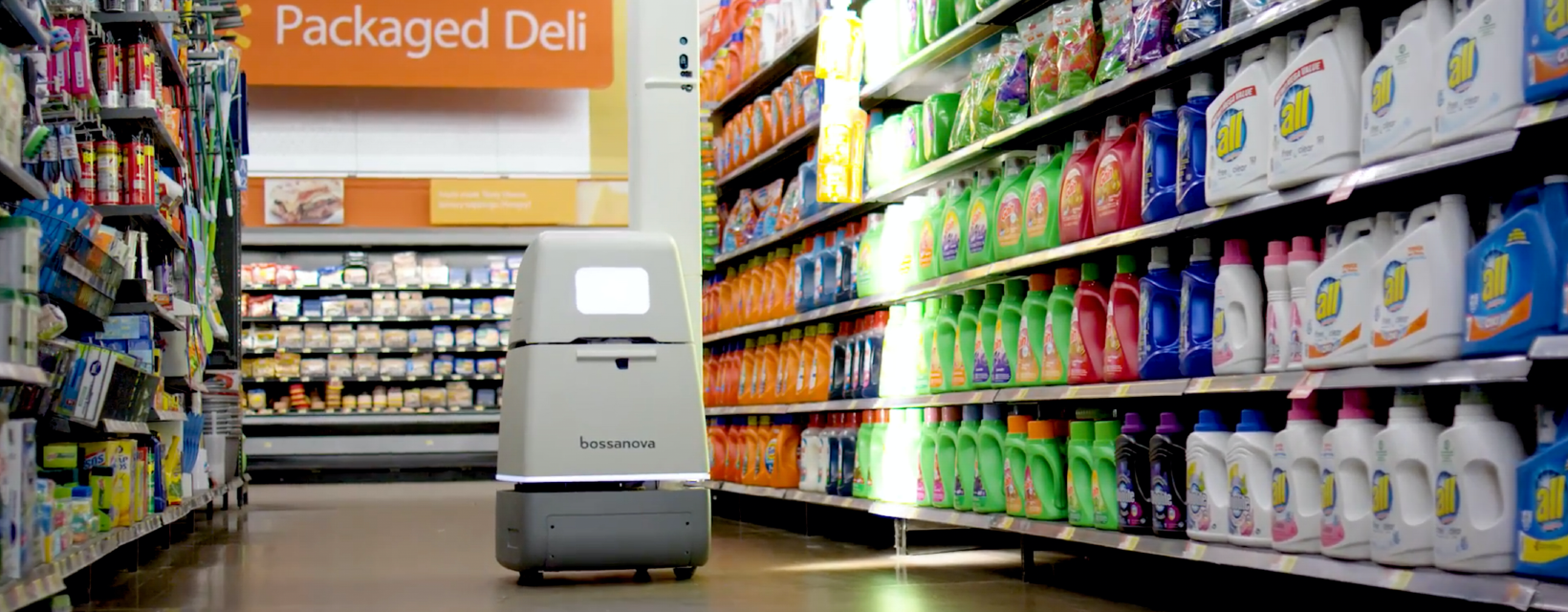In our Manifesto 2.0, we make the case that, over the next decade, automation will replace 70% of all jobs currently done by humans. That eventual period of automation will be characterized by pure AI, i.e., robots fully performing tasks humans used to handle. We maintain that view and believe that as we transition to that future there will be scenarios in which humans and machines work in tandem – humans helping train machines, and machines augmenting humans to perform tasks more efficiently.
Walmart recently terminated its partnership with Bossa Nova Robotics, which had supplied the company with thousands of robots to help automate its in-store inventory tracking. The robots, which had been deployed in about 10% of Walmart’s 4,700 US locations, autonomously roam store aisles as they scan shelves for product inventory. In short, they were attempting to replace a human task. However, according to the WSJ, which first reported the story, Walmart found that human workers, at times in combination with more simple automation tools, could achieve similar results as the robots, likely at a lower near-term cost. Score 1 for the humans.
The Walmart-Inventory Robot experiment is important, in part, because it gives us a real-world example gauge where we stand in terms of robot adoption.
Taking a step back, how are robotics companies performing?
We looked at recent revenue growth rates from five benchmark robotics companies and found a wide range of revenue performance over the past year, with some contracting by 30% and others growing at 40% plus. We attribute this wide range to multiple factors, including the pandemic, a capital and time-intensive implementation period for companies looking to use robots, and the reality that not all robot use cases are created equal. The conclusion: the past year has been neutral for robotics adoption because of near-term headwinds.
Three insights from Walmart’s decision
1. Humans’ enduring competitive advantage: flexibility
Generally speaking, machines are better multitaskers than humans. Take for example, an autonomous car that can continuously maintain 360-degree vision while navigating and braking/accelerating at the same time. That said, humans are more flexible than machines, which often allows us to quickly learn and perform a new task. With the increase of pickup orders during the pandemic, Walmart realized its employees could walk around a store fulfilling online orders, and simultaneously help update inventory on the shelves.
Eventually, a robot can be taught to fulfill orders and track inventory at the same time, better than a human. That said, there are significant programming and engineering hurdles that need to be solved to achieve this, and that takes time and money. Walmart saw that, in the near term, human labor is often more cost efficient than robots.
2. Complex robotic solutions are in the future, simple ones are here today
There is a distinction between simple automation tasks and more complex ones. While scanning inventory may seem like an easy task, it’s not, as robots must autonomously navigate their way up and down aisles, while staying clear of shoppers. Case in point: Walmart has said that it will continue to use robots for more simple tasks, such as scrubbing aisle floors, which can be done in off-hours when shoppers are not in the building.
3. It’s going to take time for humans to get comfortable interacting with robots
Per the WSJ, John Furner, president and CEO of Walmart U.S., expressed concerns about how shoppers react to seeing a robot working in the store also appeared to factor into the company’s decision. We have observed similar concerns in our robotics analysis over the years, even creating a “Robot Fear Index.” The bottom line is humans are often uneasy when it comes to interacting with new technologies. History would tell us that over time, we become more comfortable, and eventually aggressively embrace technology.
A long-term thought on the future of work
Adoption of a new technology is always a bumpy road. It typically involves a series of starts and stops, driven by improvements in hardware and software, in combination with changing consumer sentiments. Putting it all together, we remain confident in our view that automation will replace 70% of jobs currently done by humans, but the timing and the pace of the transition is harder to predict.
